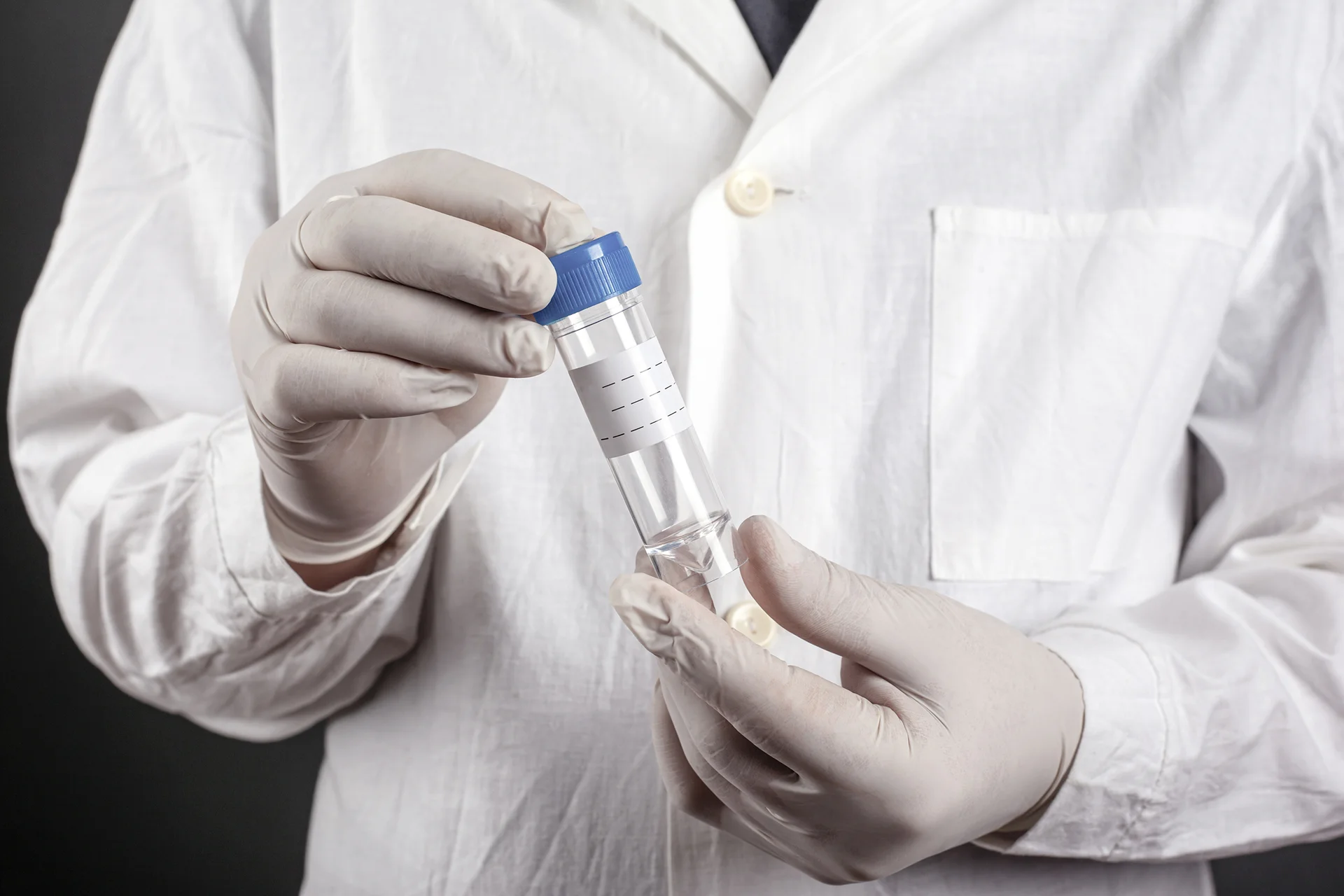The Breakdown of Histamine: How Diamine Oxidase and Stool Analysis by Doctor’s Data Helps
Histamine intolerance is a complex condition characterized by an overabundance of histamine, a compound involved in local immune responses and acting as a neurotransmitter.
One of the crucial elements in managing histamine levels is Diamine Oxidase (DAO), an enzyme responsible for breaking down histamine in the body. However, when DAO production is compromised or insufficient, it can lead to histamine intolerance.
This article explores the role of DAO in histamine intolerance, the importance of gut health, and how innovative laboratories like Doctor’s Data can be instrumental in managing this condition.
Understanding DAO and Its Role in Histamine Intolerance
Diamine oxidase (DAO) is a vital enzyme that the body produces to break down histamine. This enzyme is crucial in managing the levels of histamine in the body, particularly those originating from ingested food and drink.
DAO Production and Gut Health
The gut is one of the primary sites for DAO production. A healthy gut microbiota can support optimal DAO levels, which in turn helps regulate histamine levels. However, gut health issues, like dysbiosis or leaky gut syndrome, can potentially hinder DAO production, contributing to a build-up of histamine and subsequent symptoms of intolerance.
DAO Deficiency
DAO deficiency is a health condition where the body does not produce enough DAO enzymes. This leads to an inability to adequately break down histamine, resulting in an excess of histamine in the body, and subsequently, histamine intolerance.
Histamine Intolerance: An Overview
Histamine intolerance is a condition where the body is unable to efficiently break down histamine, causing an excess of histamine to circulate in the bloodstream. This excess histamine can trigger a wide range of symptoms, from headaches and hives to digestive issues and more.
Symptoms of Histamine Intolerance
Here are some common symptoms experienced by individuals with histamine intolerance:
- Digestive issues: bloating, diarrhea, stomach cramps
- Skin issues: hives, rashes, redness
- Respiratory problems: sneezing, wheezing, nasal congestion
- Neurological: headaches, migraines, dizziness
Causes of Histamine Intolerance
Histamine intolerance can be triggered by various factors:
- DAO deficiency: A lack of DAO enzyme, which is responsible for breaking down histamine.
- Gut health issues: Conditions like leaky gut syndrome, gut infections, inflammatory bowel disease, candida overgrowth, SIBO, and dysbiosis can trigger histamine intolerance due to the gut’s critical role in DAO production and histamine regulation.
- Histamine-rich foods: Consuming foods high in histamine or foods that trigger the release of histamine can contribute to histamine intolerance.
Doctor’s Data: Pioneers in Comprehensive Gastrointestinal Function Testing
Doctor’s Data, an established clinical laboratory with over four decades of experience, provides comprehensive stool analyses for diagnosing gastrointestinal disorders. Their wide array of tests makes them a pioneer in the field of functional medicine.
Comprehensive Stool Analysis (CSA)
Their Comprehensive Stool Analysis (CSA) is an advanced, non-invasive diagnostic tool that provides a detailed representation of the patient’s gut health. It is instrumental in identifying the presence of parasites, pathogens, and imbalances in gut flora, which may be responsible for causing gastrointestinal symptoms.
GI360™ Profile
Doctor’s Data’s GI360™ Profile is a comprehensive stool test that uses state-of-the-art molecular diagnostics, culture, and microscopy to detect a range of analytes that can contribute to gut dysbiosis and other chronic diseases. The test can identify over 45 targeted analytes, including pathogenic viruses, bacteria, and parasites.
Dysbiosis Index (DI)
An important part of the GI360™ Profile is the Dysbiosis Index (DI), a score ranging from 1 to 5. The DI is calculated based on the overall bacterial abundance and profile within the patient’s sample compared to a normobiotic (normal bacterial balance) reference population. A score above 2 indicates a deviation from normobiosis, signifying dysbiosis.
Addressing Gut Health Issues
With these comprehensive stool tests, Doctor’s Data enables clinicians to identify potential gut health issues and develop targeted treatment strategies.
By addressing these gut issues, symptoms associated with conditions like DAO deficiency and histamine intolerance can be alleviated.
Doctor’s Data’s commitment to accurate and insightful stool testing continues to contribute significantly to the management and understanding of gastrointestinal health.
Can Stool Analysis Be Used To Determine Diamine Oxidase (DAO) and Histamine Levels?

Histamine intolerance is a condition that arises from an imbalance between the accumulation and degradation of histamine in the body.
The primary enzyme responsible for the breakdown of ingested histamine is Diamine Oxidase (DAO). A deficiency in DAO can lead to an excess of histamine, causing a wide range of symptoms such as headaches, skin conditions, gastrointestinal complaints, and more.
In this context, the Comprehensive Stool Analysis (CSA) becomes a highly valuable tool. While it does not directly measure DAO and histamine levels in the body, the information it provides can help uncover underlying conditions that contribute to histamine intolerance, such as microbial imbalances or gastrointestinal issues.
Microbiome Imbalance and Histamine Production
The human gut is inhabited by a vast array of microorganisms, collectively known as the gut microbiota. Some of these gut bacteria are capable of producing or degrading histamine.
As part of its evaluation, the CSA includes comprehensive bacteriology and yeast cultures that can identify the presence of beneficial flora, imbalanced flora, and dysbiotic flora.
An imbalance in gut flora (dysbiosis) may enhance histamine production or reduce histamine breakdown, contributing to symptoms of histamine intolerance.
Therefore, understanding and managing gut microbiota using the results from the CSA could be an essential step in managing histamine intolerance.
Leaky Gut and Increased Histamine Sensitivity
The CSA test also checks for signs of inflammation and compromised gut barrier function, often referred to as “leaky gut syndrome”.
Inflammation and increased intestinal permeability can allow larger molecules, including histamine, to pass through the gut wall and into the bloodstream, potentially exacerbating symptoms of histamine intolerance.
Calprotectin and lactoferrin, two of the inflammation markers included in the CSA, can be used to differentiate between potentially life-threatening inflammatory bowel disease (IBD) and less severe inflammation such as irritable bowel syndrome (IBS).
This distinction is crucial because managing inflammation and repairing the gut barrier function can significantly improve symptoms of histamine intolerance.
Digestive Insufficiencies and DAO Production
Impaired digestion and malabsorption of vital nutrients, which the CSA can help identify, can contribute to an insufficiency in the production of DAO, thus impairing the body’s ability to break down histamine efficiently.
Key markers of digestion and absorption that CSA provides, such as elastase, fat stain, and carbohydrate markers, can inform about the efficiency of the digestive process.
By understanding these digestive insufficiencies, a more targeted nutritional approach can be developed to improve DAO production and address symptoms of histamine intolerance.
Assessing Histamine Levels: Stool Analysis Versus DAO Activity
Histamine levels can indeed be analyzed in stool samples, however, this isn’t a prevalent diagnostic approach for histamine intolerance.
Conventionally, serum diamine oxidase (DAO) activity is favored as the primary diagnostic tool for histamine intolerance.
Although stool exams to analyze the histamine concentration in patients with histamine intolerance exist, these methods haven’t become standard yet.
Normal Histamine Levels in Stool
For a more detailed understanding, it’s important to define what normal histamine levels in stool look like. In most cases, levels less than 959 ng/g stool are considered within the normal range.
Impact of Elevated Histamine Levels on Gastrointestinal Health
Elevated histamine levels in stool can have several adverse effects on gastrointestinal health. Specifically, they can amplify gastrointestinal motility, increase mucosal permeability, and potentially induce more pronounced gastrointestinal symptoms in patients suffering from irritable bowel syndrome (IBS).
Managing Histamine Intolerance Through Gut Health Restoration
While there’s currently no definitive cure for histamine intolerance, managing gut health issues is critical in controlling the symptoms. Improvement can be seen with strategies that reduce inflammation, repair leaky gut, and optimize the gut microbiota. This can include:
- Dietary Changes: Adopting a low histamine diet, avoiding histamine-rich foods, and considering supplementation with oral DAO capsules.
- Gut Health Testing: Comprehensive stool testing, like the GI360™ Profile and CSA from Doctor’s Data, can identify potential issues in the gut that contribute to histamine intolerance.
- Probiotics: Specific probiotic strains may help reduce histamine production and improve gut health. Consult a healthcare professional for personalized advice.
- Stress Management: Stress can exacerbate histamine intolerance symptoms, so stress-reducing techniques like mindfulness, yoga, and meditation can be beneficial.
By focusing on restoring gut health, individuals with histamine intolerance can manage their symptoms effectively and improve their quality of life.
Conclusion
Though a Comprehensive Stool Analysis doesn’t directly measure DAO or histamine, it uncovers vital information about gut health, which is integral to managing histamine intolerance.
This data allows healthcare professionals to tailor more effective treatment strategies, helping to mitigate the symptoms of histamine intolerance and enhance patients’ quality of life.
